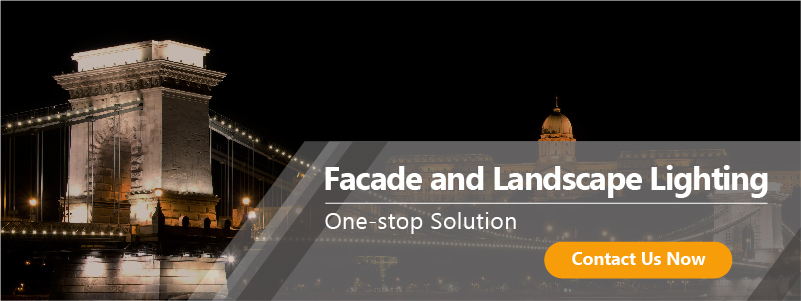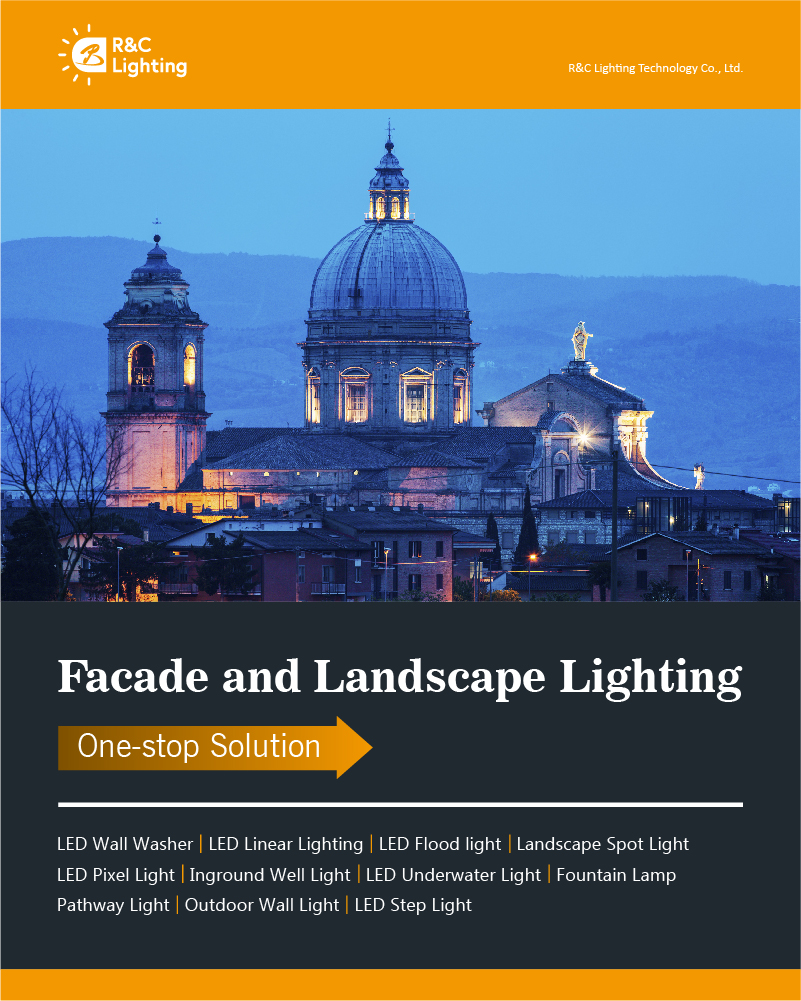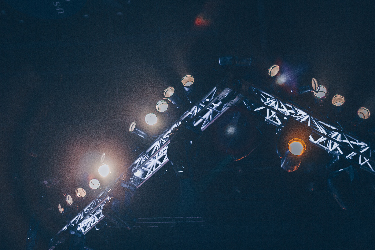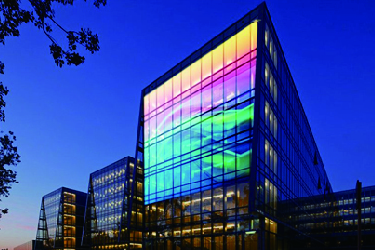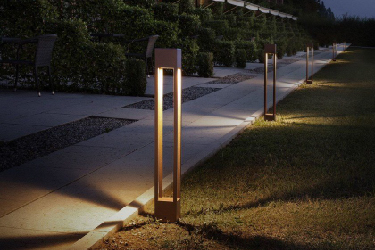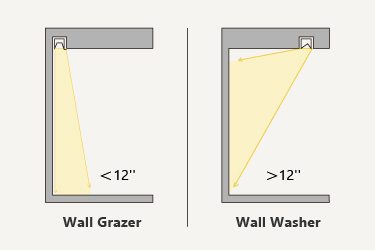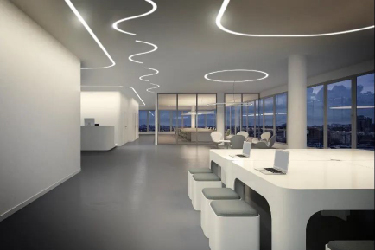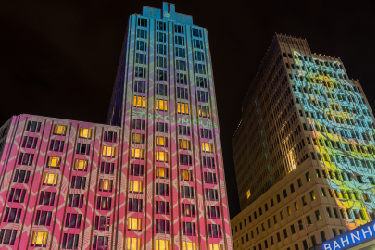Everything from smartphones to billboards uses LED displays. But recently, newer technology has started gaining attraction because of its unique look and immense potential in commercial advertising, the “Transparent LED Screen.” Few people know that LED screens come in a transparent variety, and even fewer understand how the technology works.
What is a Transparent LED Screen?
A Transparent LED display screen made up of tiny light-emitting diodes arranged in a grid pattern and encased in a glass-like sheet. The gaps between the diodes allow light to pass through the glass screen, creating a transparent window. All the electronics and microcontrollers that drive the LED screen are moved to a separately attached module.
You can think of transparent LED displays as TVs you can see through. They operate on the same principle as traditional LED display screens that you would see in malls or outdoor advertising. This transparent display technology can be scaled up to create a glass curtain wall that acts as a LED display screen.
An everyday use case for transparent displays is to showcase products through a window. Passersby can look at products like jewelry placed behind the display screen while reading product information on the LED screen.
Why are Transparent LED Screens Popular?
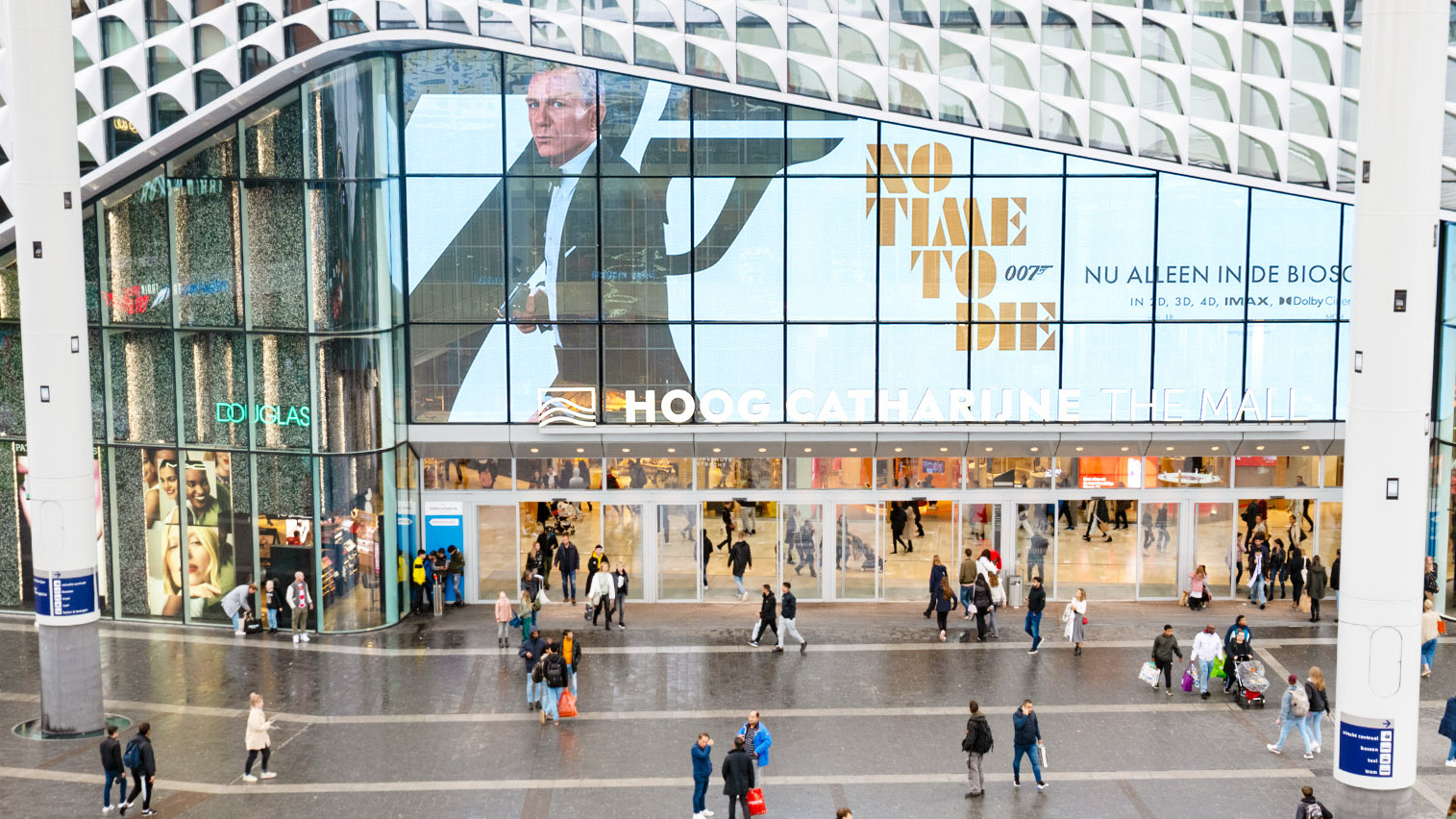
Transparent LED displays are a unique piece of lighting and display technology with various benefits in advertising media. For the advertising industry, any new technology that can help boost viewer engagement and help businesses stand out from the competition holds significant importance.
Here are a few important factors that contribute to the popularity of transparent LED display screens.
Flexible Modular Design
Currently, you can get a transparent LED display in two variations. A simple single-piece transparent LED screen comes in standard sizes or a modular design that can be scaled according to user requirements.
A modular transparent display screen is available as small individual panels that can be joined together to form a larger LED display controlled by a high-powered computer. This modular design has few size restrictions, and you can have a transparent LED display constructed to whatever size you desire.
Modular designs bring additional flexibility in terms of a curved display screen. Each transparent screen panel can have a slightly offset angle allowing you to wrap the panels around a curved structure, creating a curved and transparent LED display.
Programmable
Like a standard LED screen, you can choose to program your transparent displays to showcase various dynamic visuals. You can use the transparent LED display to showcase your brand or rent the visual real estate to other companies. You can program your transparent LED display screen as a window, a billboard, or digital signage.
You can add additional hardware and sensors to your transparent LED display to maximize its effectiveness. Motion sensors can be programmed to the display window at a store so it turns on when potential customers go near the window. Ambient light sensors can be programmed to initiate outdoor advertising once the sun goes down.
A transparent LED display is a blank canvas and can be programmed to accomplish any number of tasks.
Long Lasting
LED display technology has come a long way over the past few years. Modern LED display screens are now tougher and more resilient. They have built-in environmental protection that protects the display screen from rain, UV (sunlight), and debris. LED transparent screens will have all these benefits and more.
Transparent LED display panels come encased in a protective coating. This coating protects the bare LED (light emitting diodes) from accidental damage and increases impact resistance. The additional strength is a necessity for outdoor and glass curtain wall applications.
Another benefit comes from using a modular, transparent screen. If one section/panel gets damaged, the rest of the display screen will still run as normal. So you will only need to replace individual panels instead of the entire assembly.
Less Overall Weight
A typical transparent LED display weighs less than half compared of a similar-size traditional LED display screen. The lighter allows for more freedom in LED screen applications. You do not need additional supports and anchors to hold the LED transparent screen, as you would with standard LED screens.
You can install your transparent LED display on the frame of a window or use them as glass tops for jewelry display. The lightweight design of a transparent LED screen can also reduce international shipping costs.
Affordable
Transparent-LED screen technology is considerably more expensive than standard-LED screen options. But transparent LED screens are still more affordable than commercial outdoor displays. Outdoor displays are designed to operate in all manner of harsh conditions, and that increased protection comes at a price premium.
All large outdoor displays will have air conditioning units built on the backside. These units keep the conventional LED display screen from overheating from extended use or direct exposure to the sun. AC units cost a lot to run and maintain. They require additional structural supports and increase the overall panel thickness.
Meanwhile, transparent LED panels are thinner, consume less energy, and don’t overheat. This can be attributed to the unique design of transparent LED screens with diodes spread out over a larger surface area.
Easy to Install and Maintain
A transparent LED screen is generally easier to install since it comes as a single lightweight unit that can be easily mounted to most surfaces. The lower weight makes moving the transparent screen very easy, allowing contractors to quickly and efficiently install your transparent led screen.
Transparent LED displays are sold as sealed panels with no points of ingress (dust entry). Sealed units require very little in terms of maintenance. Modular designs require regular maintenance, but the process is made quite easy as you can remove individual panels if needed.
How to Choose Transparent LED Screens?
When choosing a quality transparent LED display, you must consider two critical factors, pixel pitch and panel dimensions (size). The price of a transparent display will increase with the decrease in pixel pitch. Of course, the price will also increase as you go for larger screen sizes.
Step 1 – Choose Pixel Pitch
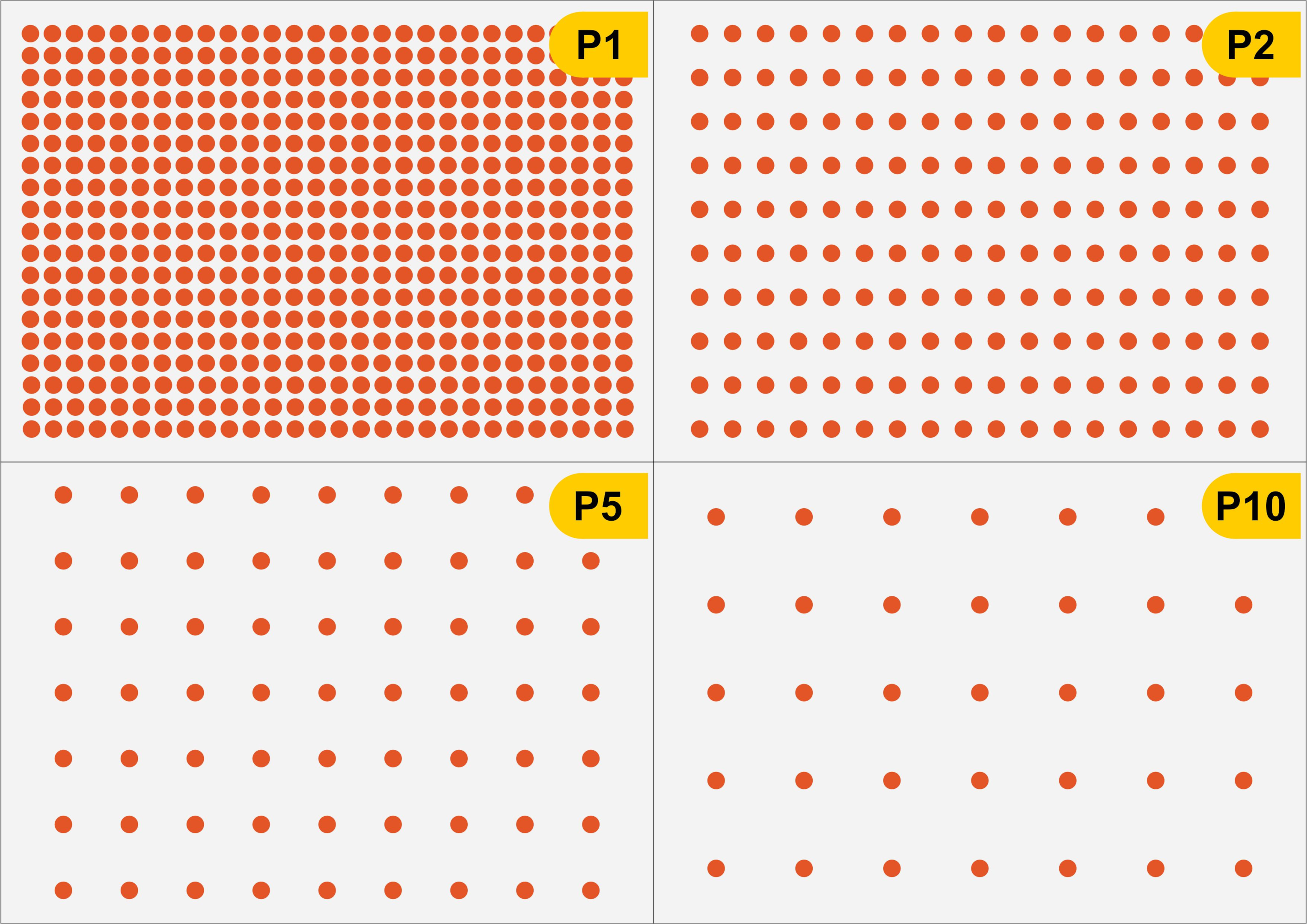
Pixel pitch is the measure of the diode density of a LED screen. It shows the distance between two adjacent pixels (diodes) in millimeters. For example, a pixel pitch of P5 means that the distance between two pixels is 5mm. A smaller pixel pitch will result in higher pixel density leading to sharper image quality.
However, pixel pitch is also a relative factor for image quality. If you get too close to a high-pixel-pitch LED display, you can see the individual pixels and the small gaps between them. But as you move further away from the display, your eyes will be unable to discern the difference between a high and low pitch display.
So you should choose a pixel pitch based on the expected viewing distance of your business ad. If your transparent LED screen is installed on a large window several feet away from the audience, you can choose high-pixel pitch options that cost a lot less. Contrarily, if your transparent screen is intended for close-up displays, lower pixel pitch becomes necessary.
It should be noted that if the pixel pitch is too low, it will negate the overall transparency. High transparency requires a higher pixel pitch screen. You need to find the perfect balance of pixel pitch and transparency according to your application.
The following is a brief table showing the recommended pixel pitch of a screen based on distance from the viewer.
| Pixel Pitch | Feet | Meters | Applications |
| P1 | 6-10 ft. | ~2-3m | Small Displays |
| P2 | 12-20 ft. | ~4-6 m | Interior Glass Wall Curtain |
| P5 | 30-50 ft. | ~10-15 m | Shop Windows |
| P10 | 60-100 ft. | ~20-30 m | Facade Displays |
| P40 | 250-350 ft. | ~80-100 m | Billboards |
Step 2 – Select Appropriate Panel Options
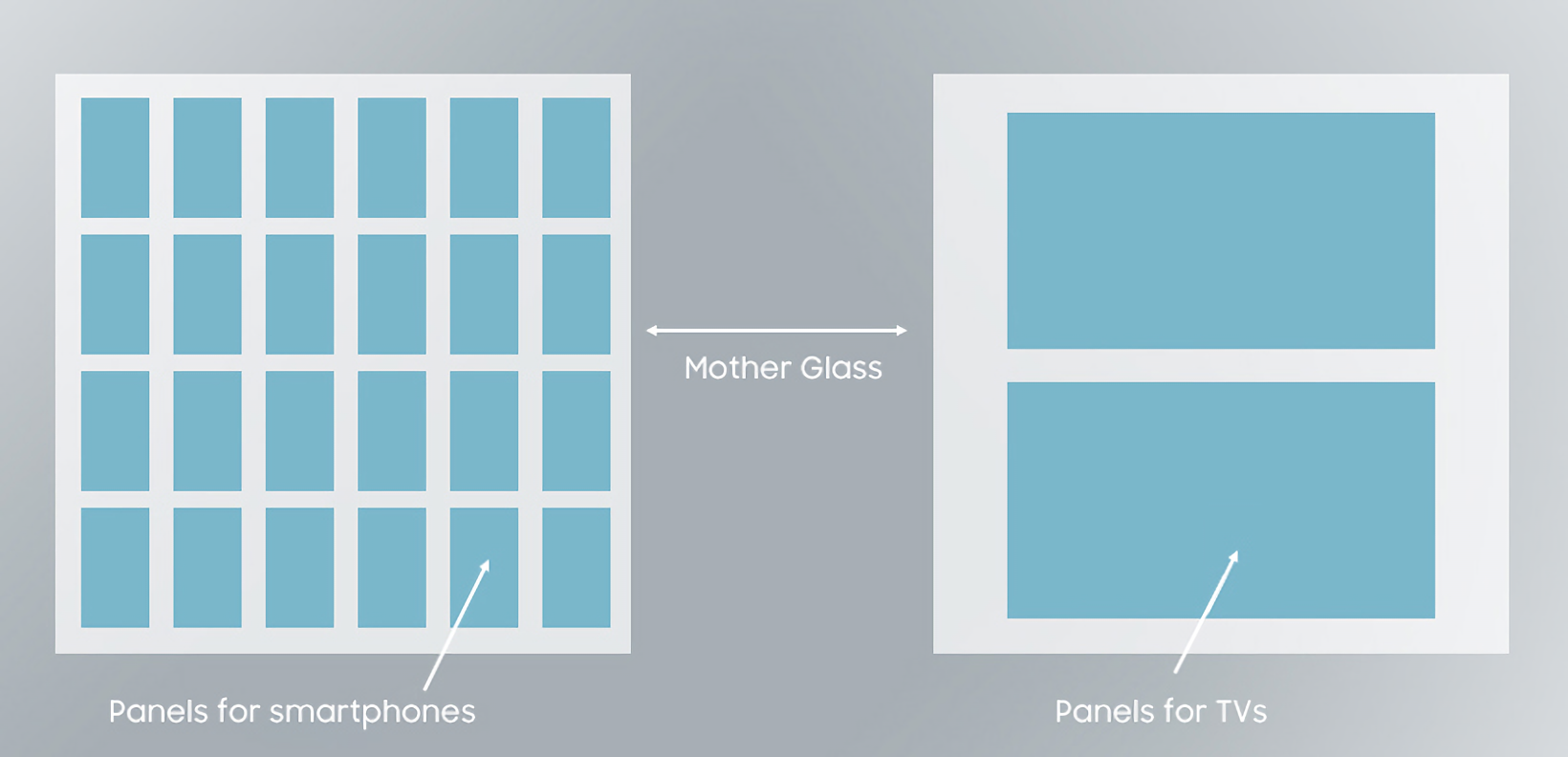
LED panel size is a huge contributor to the total cost of a transparent screen. Larger displays are difficult to produce, require additional protection in shipping, and need special oversight during installation. Modular panel designs negate some of the cost issues of large screens, but they often cost more due to the expensive electronics required to drive the panels.
Single Panel Designs
LED display panels are produced as a giant piece called mother glass. The mother glass is then cut into smaller panels and set for use in small LED displays. Even with careful and precise manufacturing practices, some impurities still make their way into the mother glass.
The mother glass must have almost zero impurities to produce large LED panels. Only one out of several production runs will yield such a mother glass. So due to the limited supply of larger LED panels, the pricing skyrockets. Choosing two smaller transparent displays is much more cost-efficient than one larger display.
Modular Panel Design
Modular panels avoid all the issues of mother glass, as they are much smaller. Modular panels are meant to be used in conjunction with other panels. Instead of buying one large LED transparent screen, you get nine smaller, less expensive panels and arrange them in a 3×3 grid.
However, the electronics needed to run and manage the nine smaller panels are significantly more expensive. Whatever cost saving you get from using modular panels gets negated by the added cost of LED controllers and mounting hardware. Modular designs are only viable once you get to specific panel dimensions.
At a screen size of 60-70 inches, you will find that a single-unit LED transparent screen is the more cost-effective solution. But modular panels become the obvious choice once you go over 100 inches. For in-between sizes like a 90 in. transparent screen, it is best to compromise and choose a tiny screen instead of modular panels.
Step 3 – Inspect Application Specific Factors
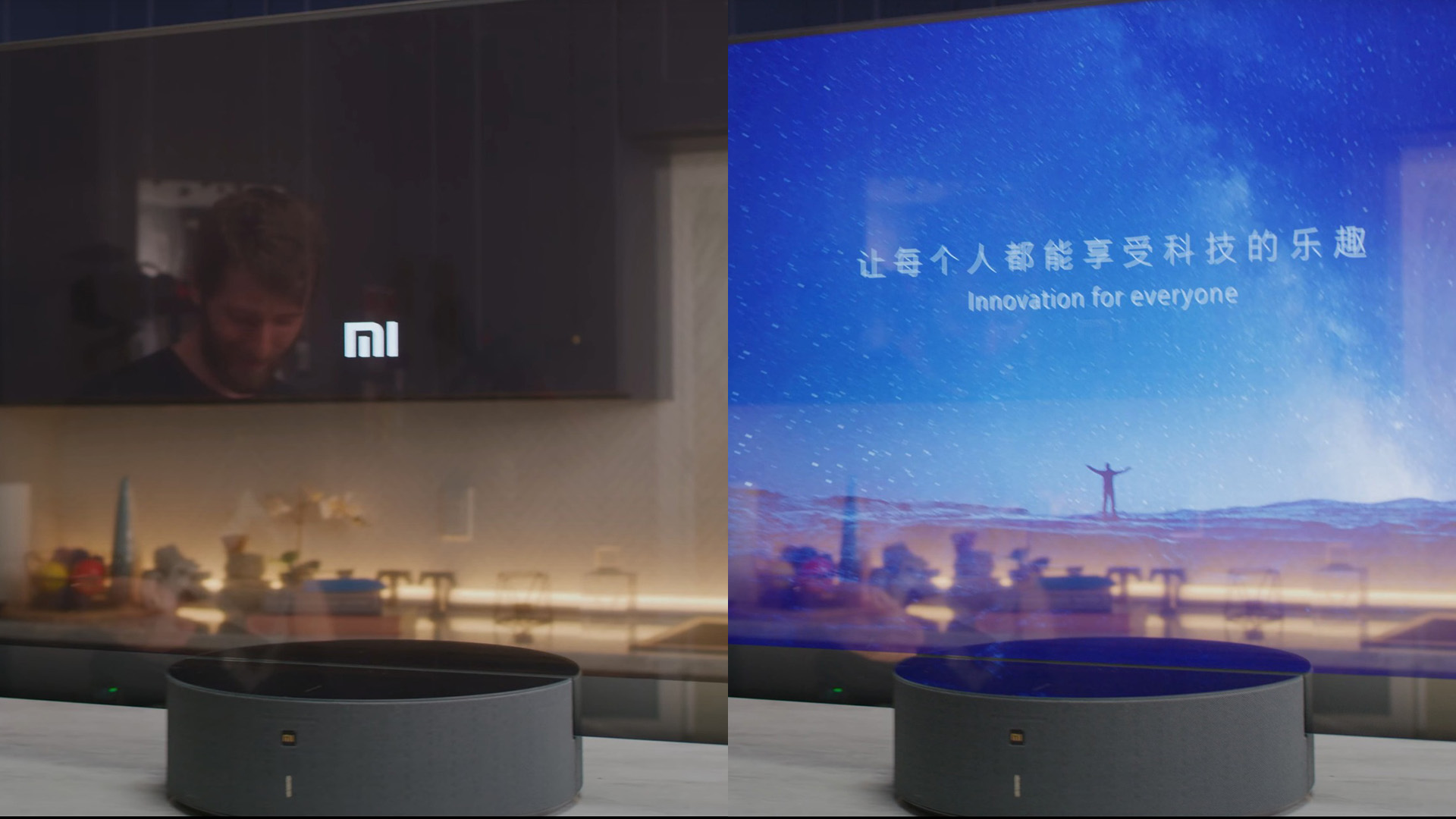
Although you make a well-informed buying decision based on pixel pitch and panel dimensions, it will be more helpful to consider the following factors.
- Light Interference
Transparent screens show the background by allowing light to pass through the display and between the pixels. But it also means that any nearby light source can cause interference with the display quality.
A light source behind the transparent screen will shine through and wash out any displayed content. Ambient non-directional light is less of an issue, but any type of directional accent or task lighting will disrupt the viewing experience. Before you buy a transparent LED display, do a final location check to avoid future issues.
- Visual Quality
Transparent screens compromise on visual quality to achieve that see-through screen look. For most advertising applications, the lower picture quality is not a deal breaker. You will, most of the time, display simple images and text from a far-off distance.
But if your business requires giving customers a detailed glance at your products and services, you will benefit more from traditional displays.
- Application Benefits
When buying a transparent LED display, you should consider its benefits for your specific application. Some applications will benefit more from transparent displays than others. Advertising solutions help the most from such displays than instructional or informative content.
05 Common Applications of Transparent LED Displays
Transparent display screens are very versatile and can be deployed in any industry. But the cost and feasibility of the product will be significantly affected based on the application.
Here are the five most common applications of transparent LED screens.
1 – Dynamic Facade Lighting
The most extensive and effective use of transparent display screens is facade lighting. Large buildings like malls, hotels, airports, etc., all have verticle real estate in the form of glass wall exteriors. These glass windows can be replaced with transparent display screens. This will allow natural light to still enter the building during the day while the LED screen displays content outside.
Dynamic facade lighting is also an excellent opportunity for businesses to offer their building front as advertising space.
2 – Interior Glass Curtain Wall
Glass curtain walls are commonly used as stylistic dividers for different sections of buildings. You can take your glass curtain wall to the next level by mounting transparent LED display screens.
You will still have the transparency benefits of glass. But now, with the additional benefits of fully addressable digital signage. Transparent LED glass walls are also a good source of lighting design. These displays can add mood and accent lighting to your building interior.
3 – Product Showrooms
The goal of a showroom is to highlight products and attract customers. Transparent-LED screens accomplish this by providing a unique, open design that doesn’t interfere with the product’s showcase. You can get all the information from a nearby transparent screen without disrupting your products’ view.
4 – Shop Windows
Most shops only have a small outward-facing window to showcase their products. Transparent LED screens help utilize that small space to its maximum potential. Bakeries can use these displays to showcase new cakes behind the window while listing the name, size, and flavoring on the screen. And when a different product is placed behind the window, you can program new information to the transparent display.
5 – Large Mall Displays
Mega malls can replace their central chandeliers with large transparent LED display screens. These displays are a visual decoration piece, and a programmable LED display screen. Here the lightweight and see-through nature of the transparent screen shine and acts as an attractive art piece.
Conclusion
LED transparent screen design is a unique lighting solution suited to promotional and commercial advertisements. Though these displays can be deployed in any location, the effectiveness of the result will vary significantly. When choosing a transparent LED display screen, you must be mindful of pitch density and panel size. These are the two most significant cost contributors and affect the viability of your application.
Why Buy Transparent LED Displays from R&C Lighting?
R&C Lighting is a titan of the LED manufacturing industry. We are dedicated to producing high-quality architectural lighting solutions on time and within budget. Our products undergo rigorous quality control and comply with international health and safety regulations.
Poor quality displays will often degrade after a few months of use and reflect poorly on your business. So, choose reliable transparent screen manufacturers like R&C to support your successful business. Contact us Now!

